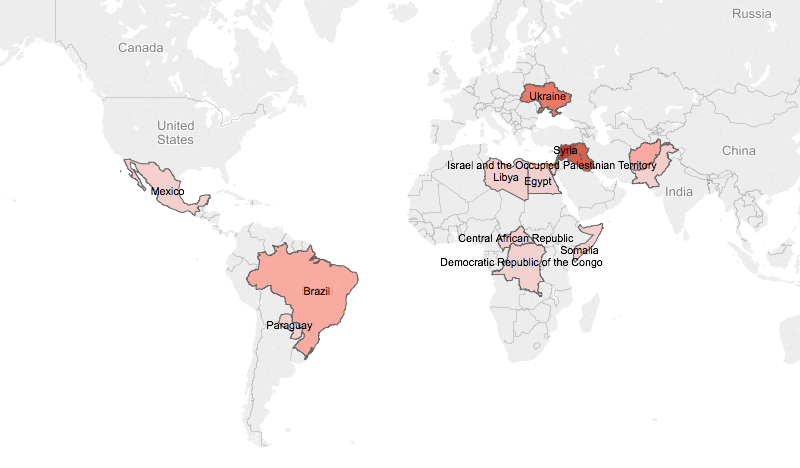WASHINGTON — A video posted Aug. 19 showing 40-year-old freelance journalist James Foley being beheaded by Islamic State militants added one more to journalists’ death toll in conflict zones in 2014. According to the Committee to Protect Journalists, 32 journalists have been killed so far this year.
“The James Foley case will have no effect on future coverage — essentially it’s a known risk that goes with the territory for those intrepid journalists,” said Albert Goldson, executive director of NYC-based Indo-Brazilian Associates LLC.
Among the 32 killed journalists, six died in Syria and five died in Iraq. The majority are male.
Ellen Shearer, a professor who taught Foley at Northwestern University’s Medill School of Journalism, Media, Integrated Marketing Communications, said today’s conflicts are much harder and more dangerous to cover because reporters can hardly “find the front lines” when different rival groups and government forces all have same apparel. In addition, “for American reporters, the absence of U.S. troops in Syria makes it more dangerous because there’s no infrastructure that they can rely on,” she added.
“The closer one can get to the story, the better the story will be, the more we can provide complete information,” Shearer said. Although Foley said no story is “worth your life,” in 2011 on his experiences of being captured and held in Libya. He was drawn by the desire to be a close eyewitness of conflicts and was killed. Because of the increasing danger for journalists in war zones and legal ramifications with respect to safety, major news organizations have a limited on-site presence in conflicts areas and use an increasing number of freelancers, Goldson said.
“The overwhelming ground journalistic work is being performed by freelance journalists – even ‘citizen journalists,’ who are not directly affiliated with the major news organizations,” he said.
These freelancers sell their stories to news outlets, but are different from staff reporters, for whom news organizations are legally responsible if they are injured or die when directly assigned to high-risk areas, freelancers normally have no protections and are thus put in a more dangerous situation.
(Data source: the Committee to Protect Journalists)

